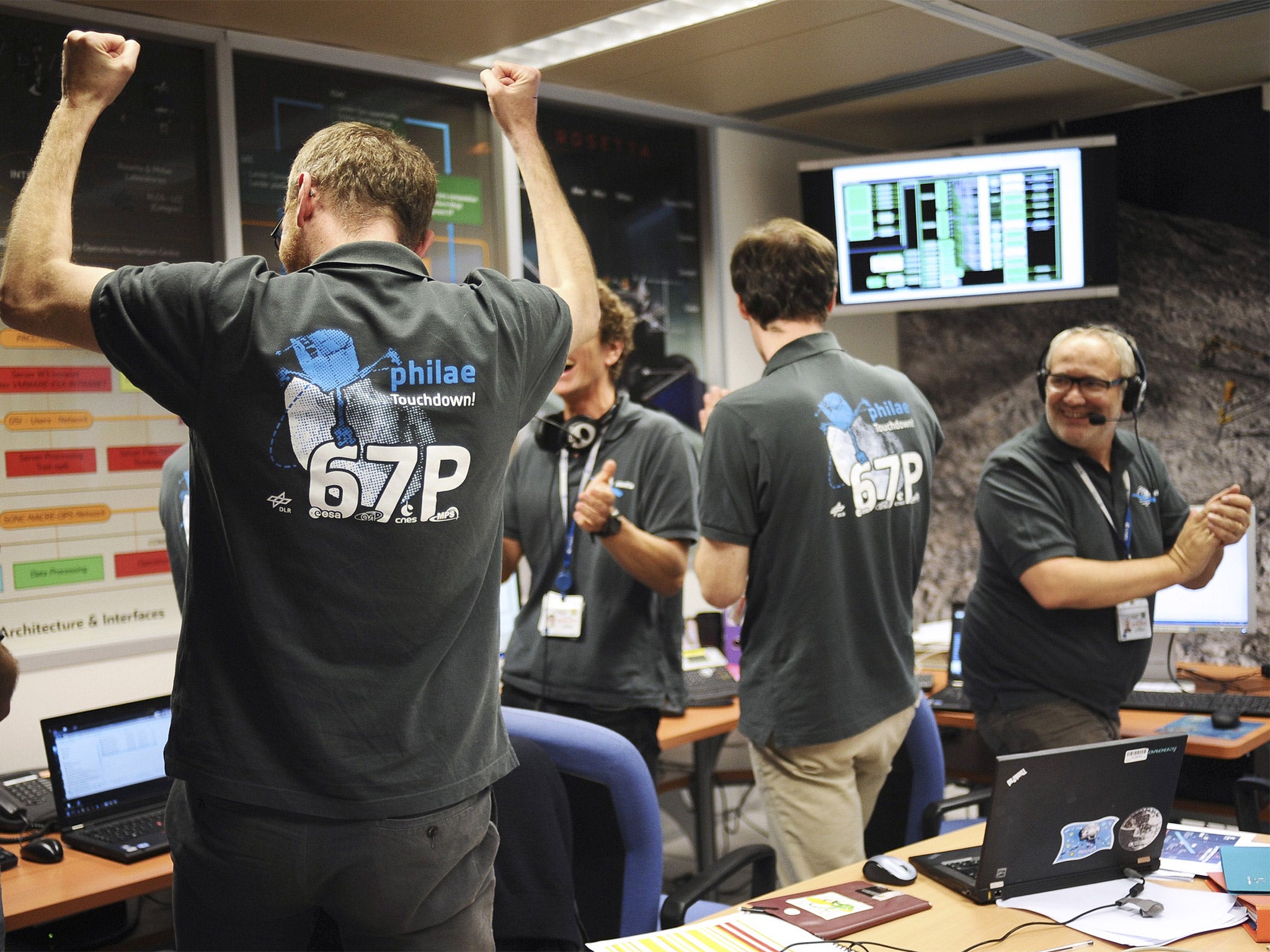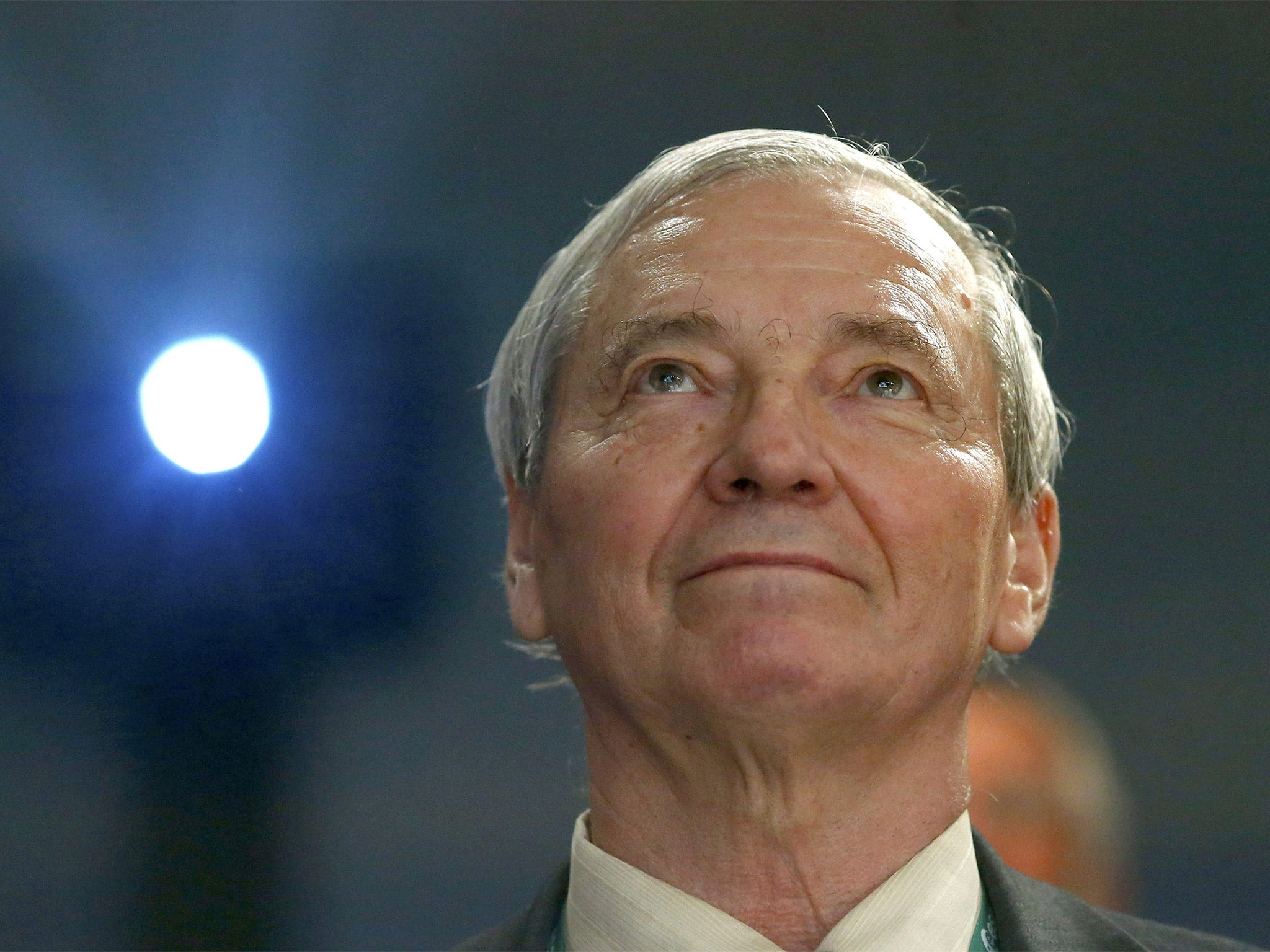Rosetta space mission: Philae probe lands on Comet 67P
'This is the most difficult landing in space history,' claims one space scientist

It was audacious, it was bold, but it was a success. For the first time, humanity has a physical presence on the icy surface of a passing comet – cosmic objects that have both fascinated and terrified human beings since the dawn of history.
The presence comes in the shape of a fridge-sized robotic probe named Philae which separated yesterday as planned and on cue from its mother ship, the Rosetta spacecraft launched more than 10 years ago.
A few minutes after 4pm British time, the European Space Agency (ESA) confirmed after an anxious wait of seven hours following its separation from Rosetta that Philae had landed on Comet 67P/ Churyumov-Gerasimenko, orbiting the Sun more than 510 million miles away in the direction of the constellation Sagittarius.
Travelling through space at a speed relative to the Sun of more than 41,000mph, the Philae lander is now riding piggy-back on a 4km-wide lump of rock, ice and dust that some have likened to a rubber duck due to its odd, double-lobed shape.
Nine minutes after 4pm, Rosetta’s flight manager Andrea Accomazzo announced to the world that the Philae probe had landed safely. “We see the lander sitting on the rock,” Dr Accomazzo said.
Jean Jacques Dordain, the director general of ESA, quickly followed up with a comment on just how momentous was the achievement: “We are the first to do this – and that [achievement] will stay forever.”
Even Captain Kirk, otherwise known as the Star Trek actor William Shatner, tweeted his congratulations when the Philae lander finally came to rest on the surface of the comet: “Cometlanding# Hooray!!!!”
David Parker, chief executive of the UK Space Agency, performed a very British reality check when he told the waiting audience gathered at the European Space Operations Centre in Darmstadt, Germany: “Hollywood is good, but Rosetta is better.”
ESA engineers said that the landing was softer than expected judging from the 4cm depression of Philae’s legs, but there was some concern over the failure of the probe’s anchors to fire into the surface, suggesting that the lander may not be fixed as tightly to the comet as ESA would have liked.
“Apparently the anchors didn’t deploy, so there’s a concern about the stability of the lander,” warned an ESA engineer.
Nevertheless, the mission’s main goal of landing a probe softly on the surface of a distant comet appeared to have been a resounding success.
“This is the most difficult landing in space history, like landing a balloon in a city centre on a windy day with your eyes closed,” said Matthew Genge, lecturer in earth and planetary sciences at Imperial College London.
The day of the landing started with high drama as Philae failed to switch on properly during the preparations for its separation from Rosetta. ESA engineers solved it by the old trick of turning it off and on again – and it worked.
The separation went as planned and both mother ship and lander managed to take parting shots of one another as they slowly drifted away. Philae finally landed just after 3.30pm British time but it took another half hour for the probe to confirm its presence on the comet’s surface.
Martin Barstow, professor of astrophysics and space science at the University of Leicester, said: “The Rosetta mission has been a tremendous adventure for ESA and the scientists involved. It has already proved to be a scientific success and promises to deliver much more over the next months and years. The riskiest part, landing the Philae spacecraft on the surface of the comet, has never been done before.”
The Philae lander will now travel with the comet as it continues its journey around the Sun. It should witness the plumes of vapourised gases emitted from the icy surface as the comet feels the rising heat of its orbital summer.

At the same time, it will drill into the comet’s surface to analyse samples of ancient dust and rock left after the creation of the Solar System.
Meanwhile, the Rosetta space craft will continue to orbit around the comet, taking measurements from on high, as the trio continue to orbit the Sun. One question Rosetta hopes to answer is whether comets contain the organic building blocks of life, Dr Genge said.
“Did comets deliver the building blocks of living things and start life on Earth? We may soon know with the help of Rosetta,” he said.
Join our commenting forum
Join thought-provoking conversations, follow other Independent readers and see their replies
Comments